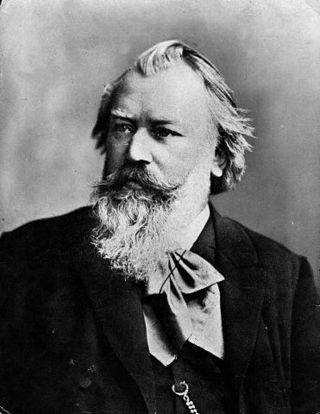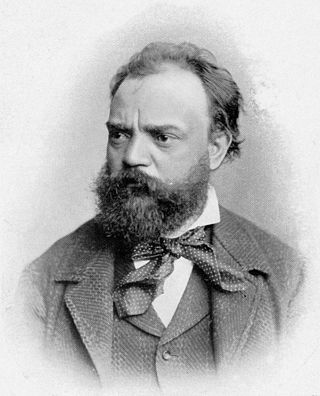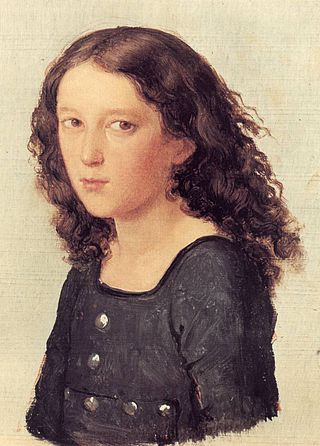The concerto grosso is a form of baroque music in which the musical material is passed between a small group of soloists and full orchestra. This is in contrast to the solo concerto which features a single solo instrument with the melody line, accompanied by the orchestra.

The Four Seasons is a group of four violin concerti by Italian composer Antonio Vivaldi, each of which gives musical expression to a season of the year. These were composed around 1718−1720, when Vivaldi was the court chapel master in Mantua. They were published in 1725 in Amsterdam, together with eight additional concerti, as Il cimento dell'armonia e dell'inventione.

The Violin Concerto in D major, Op. 61, was written by Ludwig van Beethoven in 1806. Its first performance by Franz Clement was unsuccessful and for some decades the work languished in obscurity, until revived in 1844 by the then 12-year-old violinist Joseph Joachim with the orchestra of the London Philharmonic Society conducted by Felix Mendelssohn. Joachim would later claim it to be the "greatest" German violin concerto. Since then it has become one of the best-known and regularly performed violin concertos.

The Brandenburg Concertos by Johann Sebastian Bach is a collection of six instrumental works presented by Bach to Christian Ludwig, Margrave of Brandenburg-Schwedt, in 1721. The original French title is Six Concerts à plusieurs instruments, meaning "Six Concertos for several instruments". Some of the pieces feature several solo instruments in combination. They are widely regarded as some of the greatest orchestral compositions of the Baroque era.

The Violin Concerto in D major, Op. 35 was the only concerto for violin composed by Pyotr Ilyich Tchaikovsky. Composed in 1878, it is one of the best-known violin concertos.

Felix Mendelssohn's Violin Concerto in E minor, Op. 64, MWV O 14, is his last concerto. Well received at its premiere, it has remained among the most prominent and highly-regarded violin concertos. It holds a central place in the violin repertoire and has developed a reputation as an essential concerto for all aspiring concert violinists to master, and usually one of the first Romantic era concertos they learn. A typical performance lasts just under half an hour.

Edward Elgar's Cello Concerto in E minor, Op. 85, his last notable work, is a cornerstone of the solo cello repertoire. Elgar composed it in the aftermath of the First World War, when his music had already gone out of fashion with the concert-going public. In contrast with Elgar's earlier Violin Concerto, which is lyrical and passionate, the Cello Concerto is for the most part contemplative and elegiac.

The Double Concerto in A minor, Op. 102, by Johannes Brahms is a concerto for violin, cello and orchestra. The orchestra consists of 2 flutes, 2 oboes, 2 clarinets, 2 bassoons, 4 horns, 2 trumpets, timpani and strings.

The Violin Concerto No. 3 in B minor, Op. 61, by Camille Saint-Saëns is a piece for violin and orchestra written in March 1880. Saint-Saëns dedicated the concerto to fellow composer-virtuoso Pablo de Sarasate, who performed the solo part at the premiere in October 1880 in Hamburg.

L'estro armonico, Op. 3, is a set of 12 concertos for string instruments by Italian composer Antonio Vivaldi, first published in Amsterdam in 1711. Vivaldi's Twelve Trio Sonatas, Op. 1, and Twelve Violin Sonatas, Op. 2, only contained sonatas, thus L'estro armonico was his first collection of concertos appearing in print. It was also the first time he chose a foreign publisher, Estienne Roger, instead of an Italian. Each concerto was printed in eight parts: four violins, two violas, cello and continuo. The continuo part was printed as a figured bass for violone and harpsichord.

The Violin Concerto in A minor, Op. 53, is a concerto for violin and orchestra composed by Antonín Dvořák in 1879. It was premiered in Prague on October 14, 1883. by František Ondříček, who also gave the Vienna and London premieres. Today it remains an important work in the violin repertoire.

Sir Edward Elgar's Introduction and Allegro for Strings, Op. 47, was composed in 1905 for performance in an all-Elgar concert by the newly formed London Symphony Orchestra. Scored for string quartet and string orchestra, Elgar composed it to show off the players' virtuosity. Though initial critical reception was lukewarm at best, the score soon came to be recognized as a masterpiece. The work, which is roughly twelve to fourteen minutes in length, is like a multi-layered symphonic poem for string orchestra, with several prominent themes.
The Concerto in F Minor for Bass Tuba and Orchestra by British composer Ralph Vaughan Williams was written in 1954 for Philip Catelinet, principal tubist of the London Symphony Orchestra (LSO), who together gave the premiere on 13 June 1954 with Sir John Barbirolli conducting. The same musicians made the work’s first recording that same year. This concerto was the first concerto written for solo tuba.

The Concerto for Violin and String Orchestra in D minor, MWV O 3, was composed by Felix Mendelssohn at the age of thirteen. It has three movements, Allegro–Andante–Allegro, and performance duration is approximately 22 minutes.

12 Concerti a cinque is a collection of concertos by the Italian composer Tomaso Albinoni, published in 1722.

The Barjansky Stradivarius of c.1690 is an antique cello fabricated by the Italian Cremonese luthier Antonio Stradivari (1644-1737).
The Melos Ensemble is a group of musicians who started in 1950 in London to play chamber music in mixed instrumentation of string instruments, wind instruments and others. Benjamin Britten composed the chamber music for his War Requiem for the Melos Ensemble and conducted the group in the first performance in Coventry.

The six sonatas for violin and obbligato harpsichord BWV 1014–1019 by Johann Sebastian Bach are works in trio sonata form, with the two upper parts in the harpsichord and violin over a bass line supplied by the harpsichord and an optional viola da gamba. Unlike baroque sonatas for solo instrument and continuo, where the realisation of the figured bass was left to the discretion of the performer, the keyboard part in the sonatas was almost entirely specified by Bach. They were probably mostly composed during Bach's final years in Cöthen between 1720 and 1723, before he moved to Leipzig. The extant sources for the collection span the whole of Bach's period in Leipzig, during which time he continued to make changes to the score.
The Violin Concerto No. 1 is the first violin concerto by the British composer Peter Maxwell Davies. It was commissioned by the Royal Philharmonic Orchestra to commemorate the ensemble's 40th anniversary. The work was completed in 1985 and first performed at the St Magnus Festival by the violinist Isaac Stern and the Royal Philharmonic Orchestra conducted by André Previn on 21 June 1986. The piece is dedicated to Isaac Stern.
Herbert Henry Kinsey (Kinze) was a British violinist and composer. Kinsey was a founder member and 2nd violinist of the English String Quartet in 1902, and a member of the famed London String Quartet from 1918. He played with the London Symphony Orchestra 1913–1928. His tutor books for the violin have been published by the Associated Board of the Royal Schools of Music since the 1930s.














